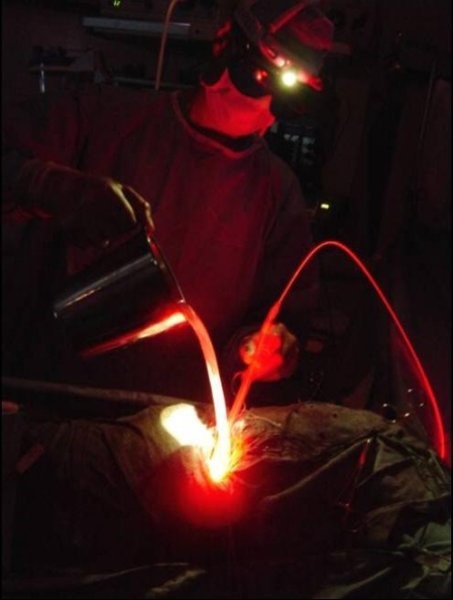
Photothermal Ablation Therapy!
A recent systematic analysis for the Global Burden of Disease Study revealed that over 1.3 million deaths per year occur due to lung cancer and that lung cancer is the leading cause of cancer-related mortality worldwide. Furthermore, CT screening studies for lung cancer indicate that this number will continue to increase as more patients are diagnosed with the disease. The best opportunity for cure in the treatment of early stage lung cancer has been surgical lobectomy, however in certain patients either facing compromised cardiopulmonary functions or other medical ailments, lobectomy is not a suitable option.
What It's all about!
Alternative treatments such as percutaneous RadioFrequency Ablation (RFA) therapy or CryoAblation have been applied to treat the lung tumors, however these techniques increase the risk for abnormal accumulation of fluid in the pleural space, the area between the two layers of the thin membrane that covers the lungs. Bronchoscopic photodynamic therapy (PDT), which uses a specific wavelength of light shone onto the tumor, has shown clinical indications in selected patients with early-stage central endobronchial tumors for radical cure and improved respiratory function. While this laser ablation technique using high output power lasers is an effective treatment of endobronchial tumors, peripheral lung tumors cannot be treated by the existing lasers because of the diameter of the laser fiber. To access the peripheral lung, thinner laser fibers are required but thin laser fibers are not suitable for high-powered ablation because of the limitation of the output power.
Researchers at the Division of Thoracic Surgery, Toronto General Hospital, have come up with a novel alternative using Photothermal Ablation techniques to treat human lung cancer using low-power near-infrared (NIR) lasers. A 808 nm NIR laser (LRD-0808-PFR-02000-01) with a 300μm fiber from Laserglow was used for this treatment because NIR lasers have high tissue penetration as there is a lack of efficient absorbers of this wavelength. When combined with a topical injection of Indocyanine Green (ICG), a Food and Drug Administration (FDA)-approved drug that can absorb NIR laser and convert the absorbed light energy into heat inside the ICG molecule, it offers an effective treatment option for early stage lung cancer.
Final Comments
This in vivo study showed that the efficacy of low powered lasers by irradiating human cancer cells in nude mice using a 500mW output power fiber coupled NIR laser. The laser heated the surface temperature of the tumor, which had a diameter of 5 mm, to 48° °C for 10 minutes by the photothermal ablation therapy. A 60-day follow up showed that the tumor had completely disappeared in the test subjects. The 500mW output power class 3B laser is a significantly lower powered laser when compared with currently used lasers in the clinic. For example, the output power of a continuous wave laser for an endobronchial tumor is 20-100W, while that of a laser for varicose vein is 10 to 14 W. These significantly lower powered NIR lasers may potentially offer new photothermal ablation therapy for the treatment of lung cancers.
To read about the lasers used in this research please Click Here
To access the complete research paper Click Here